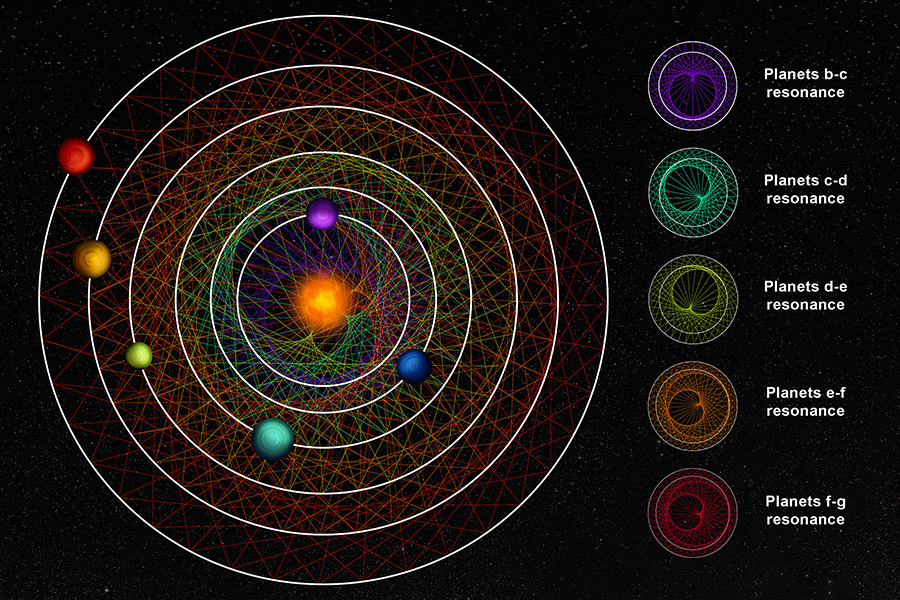
© CC BY-NC-SA 4.0 / Thibaut Roger / NCCR Planets
Astronomers have uncovered six sub-Neptune exoplanets dancing in lock-step around the same distant star, solving a big mystery in the process. The ancient, pristine system opens a window into how planetary systems form. The team’s findings are published in Nature.
In 2020, NASA’s Transiting Exoplanet Survey Satellite (TESS) helped astronomers observe dips in the brightness of the star HD 110067. Such dips are the calling card of transiting planets. But how many planets were there exactly? Astronomers’ initial analysis of the data suggested two, one with an orbital period of 5.6 days and another with an undetermined orbit.
Yet by the time they observed HD 110067 with TESS again two years later, this interpretation no longer fit the data. “That’s when we decided to use Cheops,” says Rafael Luque (University of Chicago), referring to the European Space Agency’s Characterising Exoplanet Satellite. “We went fishing for signals among all the potential periods that those planets could have.”
It quickly became clear that there was a third planet in the system. The trio of planets (called HD 110067 b, c, and d) are in orbital resonance, meaning their orbital periods are intimately linked. The inner planet takes 9.1 days to orbit, the next takes 1.5 times longer at 13.7 days and the third takes 1.5 times longer again at 20.5 days. These are known as 3:2 resonances.
The planets’ linked orbits means that they are locked in a rhythm and align every few orbits, creating duo transits, the astronomical equivalent of a musical chord. This phenomenon is what caused the initial confusion.
However, the discoveries did not stop there, as a three-planet system was still not a perfect fit. Instead, Luque’s team dug deeper and uncovered three more planets (HD 110067 e, f, and g) hiding in the data. There is a 4:3 resonance between d and e as well as e and f, while g is in a 6:1 resonance with b. All have radii bigger than Earth’s but smaller than Neptune’s, putting them in the sub-Neptune category.

ESA
“Cheops gave us this resonant configuration that allowed us to predict all the other periods,” Luque says. “Without that detection from Cheops, it would have been impossible.” It is the second time Cheops has uncovered a six-planet system in the three years since it was launched; the first planet is known as TOI 178.
“I think it’s a delightful discovery,” says Carole Haswell (Open University, UK), who wasn’t involved in the research. The resonance also sheds light on the system’s past. “It probably means the planetary system has been locked in this configuration for most of the lifetime of the star,” she says.
Most planetary systems are thought to form in a resonance configuration, but it is a delicate balance that is easily upset by the influence of giant planets, passing stars, or even large impacts. “We think only about 1% of all systems stay in resonance,” says Luque. “[HD110067] shows us the pristine configuration of a planetary system that has survived untouched.”
We could learn more about these planets soon. “They are great prospect for a technique called transmission spectroscopy, which can tell us about the composition of the planets’ atmospheres,” Haswell says. HD 110067 is the brightest-known system with four or more planets, and the James Webb Space Telescope is well suited to such a task.
Understanding planets like this sextet is important work, as sub-Neptunes are the most common planet type in the universe. Working out how they form could help us to explain why we don’t have one in our own solar system, and in turn whether that’s linked to how we ended up here to ask these questions in the first place.
